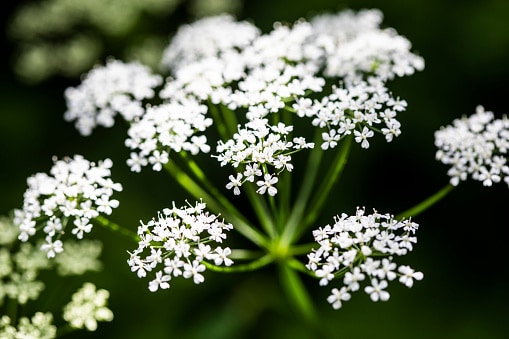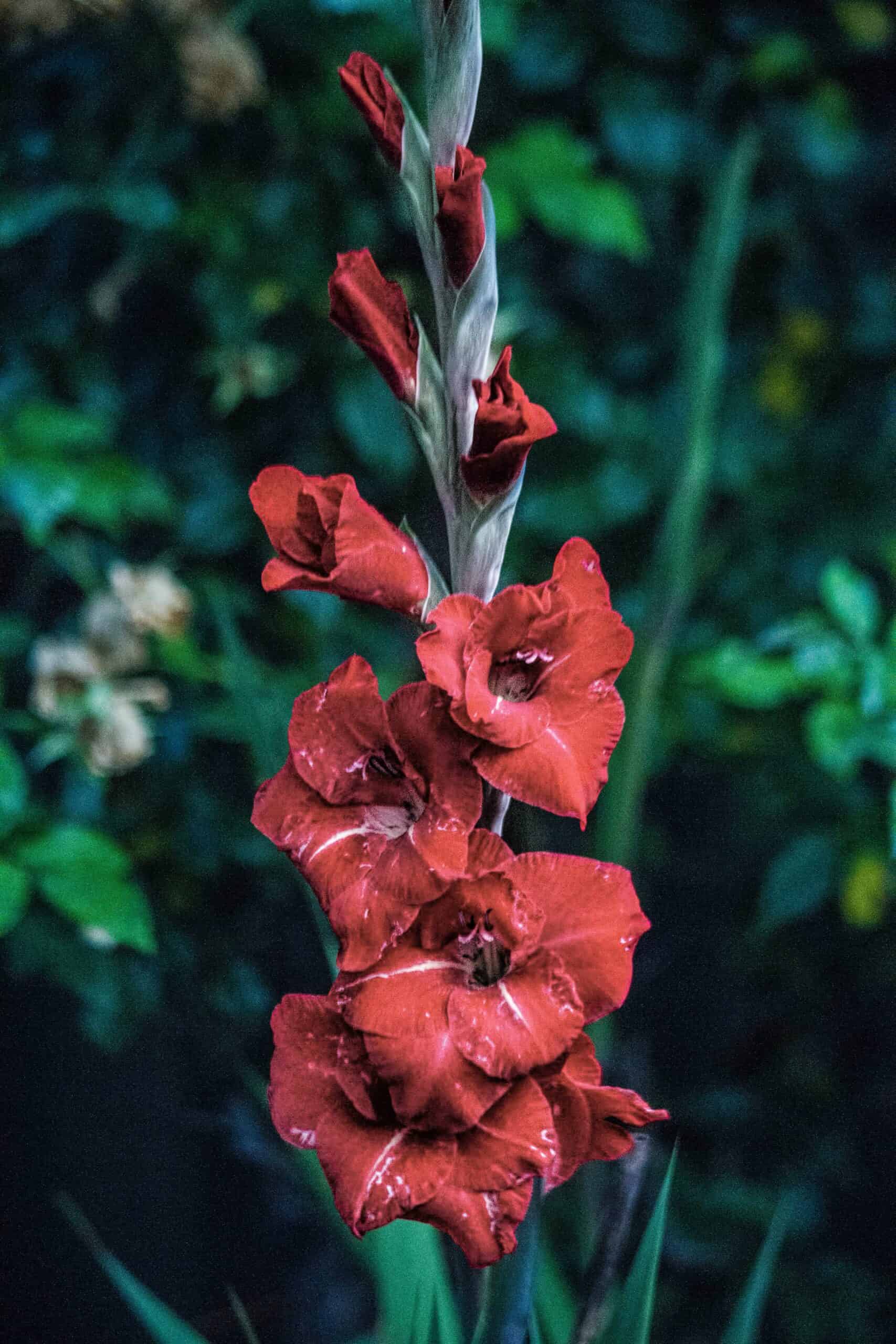Queen Anne’s Lace, also known as Daucus Carota, is a colorful, deciduous plant belonging to the Apiaceae, or parsley family. It is native to Europe, but is also cultivated in various places around the world. It is a white, flowering, sometimes biennial plant that grows up to three feet tall. The stalks are stiff and carry dense umbels full of tiny white flowers. The flowers sometimes have a small red center. The roots are edible when young, but the plant closely resembles Poison Hemlock, so it is important to be able to distinguish between the two.
How to Plant
Queen Anne’s Lace likes full sun and well-draining soil. It prefers a neutral to slightly alkaline soil pH of 6.7-7. Before planting, make sure to add aged compost and aged manure to the soil to boost nutrient content. Plant the seedlings after last frost, spacing at least 12” apart. Water the area thoroughly before planting and make sure the soil remains evenly moist. Queen Anne’s Lace can also be grown in containers, but make sure to use a large enough pot, as the root system can grow to be fairly large.
Meaning and Symbolism
The name Queen Anne’s Lace is thought to have come from a legend about Queen Anne of England. According to the story, the queen was having difficulty embroidering one day, so she pricked her finger and a tiny drop of blood fell onto the fabric. The drop of blood turned into a delicate pattern of lacy white that looked like a wildflower.
Queen Anne’s Lace has also been associated with spirituality, honesty, humility, remembrance, and confidence due to its beauty and delicate lacy appearance.
History, Mythology, and Religious Significance
Queen Anne’s Lace is deeply rooted in European traditions. In ancient Greece, the plant was often woven into crowns and worn by actors in theatre performances. It was also a popular herb in medieval healing practices, used to treat a variety of ailments including infections, insomnia, and eye irritations. In addition, the plant was widely associated with the Virgin Mary due to its white petals, and was even used in some Christmas celebrations.
Flower Varieties and their Defining Characteristics
Queen Anne’s Lace is a biennial plant, and there are a few varieties that differ slightly in their colour, size, and growing habits.
The most common variety is Daucus Carota, which produces delicate white flowers and grows up to three feet tall. However, there is also a pink-flowering variety known as ‘Button Posie’. This variety is more compact, growing up to two feet in height, and produces smaller umbels with pinkish-red blooms.
Lastly, ‘Purple Rain’ is a variety that is more suitable for dry, poorer soils, which produces deep burgundy petals and white centers, growing up to two and a half feet tall.
How to Pot and Repot
To pot and repot Queen Annes Lace, use a potting mix that is light and loamy, with good drainage. Fill the pot up to one inch from the rim and shake gently to settle the soil. Plant the root and stems of Queen Annes Lace in the center of the pot and backfill with soil until the crown is just covered. Water thoroughly and place the potted plant in a partially sunny area. When it’s time to repot, remove the plant from the pot, gently loosen the roots and place it in a new container with fresh soil. Be sure to water thoroughly after repotting.
How to Prune
Pruning Queen Annes Lace is important to maintain the height of the plant, as well as encourage new growth. Cut the stems back to the desired length at the nodes, about one inch above the soil. Keep in mind that the shorter the cut, the sooner the plant will flower again. Prune away any dead growth and yellow leaves to keep the plant looking its best.
How to Propagate
Propagating Queen Annes Lace is quick and easy. The simplest way is to collect seeds and sow them directly into the soil. The Queen Annes Lace will also sprout from root cuttings taken in the fall. To do this, cut root sections that are 8-10” long and plant them horizontally in moist soil. Place a cloche over the cutting and let it grow.
Common Pests and Diseases
Queen Annes Lace is generally prone to pests and diseases. Common diseases include damping off and root rot, which can be prevented with good air circulation and soil drainage. Common pests include aphids, spider mites, and caterpillars, which can be treated with insecticidal soap or a mixture of one part rubbing alcohol and two parts water.
Three Frequently Asked Questions about Daucus Carota
Q: What is the lifespan of Queen Annes Lace?
A: Queen Annes Lace is a biennial plant, meaning it will take two years from planting to flowering. Once the flower has bloomed, the plant will usually wither and die away.
Q: Does Queen Annes Lace require special fertilizers?
A: Queen Annes Lace is relatively tolerant of most soils, but benefits from occasional fertilizing, especially in the spring. A balanced fertilizer mixed into the soil during planting is a great way to help boost the plant’s growth and flowering potential.
Q: How often should Queen Annes Lace be watered?
A: Queen Annes Lace should be kept evenly moist by watering every few days as needed. Decrease watering during the winter months and increase during the summer especially when the temperatures are high.
Factsheet
| Queen Annes Lace | Daucus Carota |
| Family | Apiaceae |
| Plant Type | Biennial |
| Mature Size | Up to 3 feet tall |
| Sun Exposure | Full sun |
| Soil Type | Well-draining |
| Soil pH | Neutral to slightly alkaline (6.7-7) |
| Bloom Time | Spring to summer |
| Flower Color | White with a red center (sometimes pink or burgundy variants) |
| Hardiness Zones | 3-9 |
| Native Area | Europe |
What we love from Amazon this week
Buy these wonderful flowers directly from Amazon:















